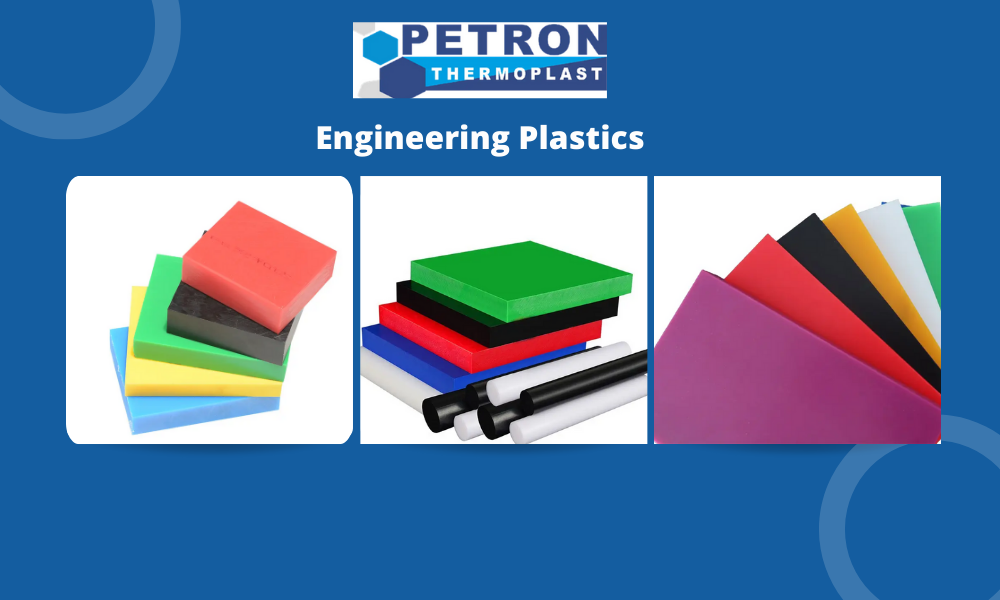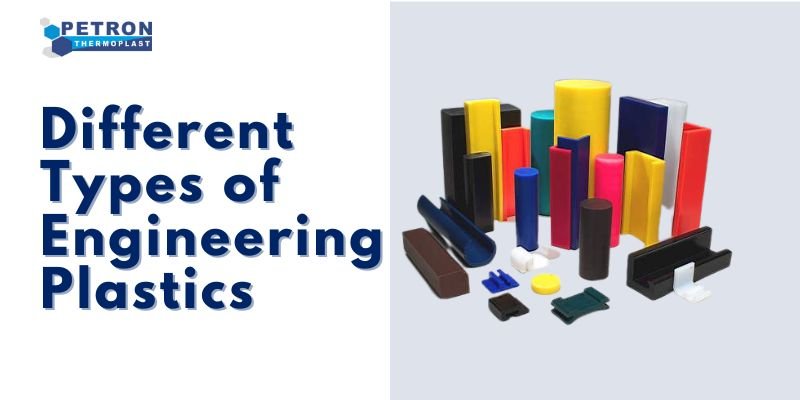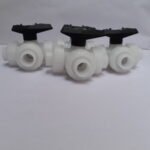Different Types of Engineering Plastics
Engineering plastics play a vital role in modern industries due to their exceptional mechanical properties, versatility, and wide range of applications. These materials are used in everything from automotive parts and electronic devices to medical equipment and consumer products. In this article, we will delve into the Different Types of Engineering Plastics.
Understanding Engineering Plastics
Engineering plastics, also known as advanced or performance plastics, are a subset of polymers that exhibit superior mechanical, thermal, electrical, and chemical properties compared to standard plastics. These materials are designed to withstand demanding conditions and are often used as replacements for metals or ceramics due to their lightweight nature and excellent performance characteristics.
Different Types of Engineering Plastics
Here are the given below different types of engineering plastics:
1. Polyethylene (PE)
Polyethylene is one of the most widely used engineering plastics due to its versatility and cost-effectiveness. It comes in various forms, such as low-density polyethylene (LDPE) and high-density polyethylene (HDPE). LDPE is known for its flexibility and is commonly used in packaging materials, while HDPE’s rigid nature makes it suitable for products like bottles, pipes, and containers.
2. Polypropylene (PP)
Polypropylene offers excellent chemical resistance and is often chosen for applications involving corrosive substances or high temperatures. It’s used in products ranging from food containers and automotive components to medical devices and textiles.
3. Polycarbonate (PC)
Polycarbonate stands out for its exceptional impact resistance and transparency. This engineering plastic is used in eyewear lenses, automotive headlamps, and even bulletproof glass due to its ability to absorb energy without breaking.
4. Acrylonitrile Butadiene Styrene (ABS)
ABS is a popular engineering plastic known for its toughness, impact resistance, and ease of processing. It’s frequently used in the production of consumer goods, automotive parts, and electronics.
5. Polyamide (PA)
Polyamides, commonly referred to as nylon, come in various formulations with differing properties. They exhibit high strength, excellent wear resistance, and good dimensional stability. Nylon is used in applications ranging from mechanical components to textiles.
6. Polyether Ether Ketone (PEEK)
PEEK plastic is a high-performance engineering material with exceptional thermal and chemical resistance. Peek (Polyether ether ketone) often chosen for aerospace, medical, and electronics applications where extreme conditions are present.
7. Polytetrafluoroethylene (PTFE)
PTFE is well-known by its brand name Teflon® and is valued for its non-stick properties and chemical resistance. It’s used in applications such as cookware coatings, gaskets, and seals.
8. Polyethylene Terephthalate (PET)
PET is commonly used for its combination of clarity, mechanical properties, and barrier resistance. It’s used in beverage bottles, food packaging, and even textiles.
Properties and Applications of Engineering Plastics
Each type of engineering plastic possesses unique properties that make it suitable for specific applications. The following table summarizes some of the key properties and common applications of different types of engineering plastics:
| Engineering Plastic | Key Properties | Common Applications |
|---|---|---|
| Polyethylene | Versatile, flexible | Packaging materials, containers |
| Polypropylene | Chemical resistance, tough | Automotive parts, medical devices |
| Polycarbonate | Impact resistance, transparent | Eyewear lenses, automotive parts |
| ABS | Toughness, impact resistance | Consumer goods, electronics |
| Polyamide (Nylon) | High strength, wear resistance | Mechanical components, textiles |
| PEEK | High temperature resistance | Aerospace, medical, electronics |
| PTFE (Teflon®) | Non-stick, chemical resistance | Cookware, gaskets, seals |
| PET | Clarity, barrier resistance | Beverage bottles, food packaging |
Advantages of Engineering Plastic
Here are advantages of engineering plastic given below:
1. Superior Mechanical Properties
One of the most significant advantages of engineering plastics is their exceptional mechanical properties. These materials exhibit high strength, toughness, and impact resistance, making them suitable for applications that demand structural integrity. Unlike traditional plastics, engineering plastics can withstand heavy loads and dynamic stresses, making them ideal for components subjected to mechanical forces.
2. Lightweight Design
Engineering plastics are known for their lightweight nature, which contributes to weight reduction in various products. This advantage is particularly crucial in industries such as automotive and aerospace, where minimizing weight while maintaining performance is essential. The use of engineering plastics in place of heavier materials like metals can lead to improved fuel efficiency, reduced emissions, and enhanced overall efficiency.
3. Chemical Resistance
Many engineering plastics offer excellent resistance to a wide range of chemicals, solvents, and corrosive substances. This property makes them suitable for applications where exposure to harsh environments is a concern. From chemical storage tanks to components in the chemical processing industry, engineering plastics can maintain their structural integrity and functionality even in aggressive chemical environments.
4. Thermal Stability
Certain types of engineering plastics exhibit impressive thermal stability, allowing them to retain their properties over a wide temperature range. This advantage makes these materials suitable for applications involving extreme temperatures, such as automotive engine components, electronic devices, and industrial machinery. The ability to perform consistently under varying thermal conditions enhances the reliability and longevity of products.
5. Electrical Insulation Properties
Engineering plastics are often chosen for applications that require excellent electrical insulation properties. These materials can effectively isolate electrical components, preventing the passage of electrical current and reducing the risk of short circuits or electrical failures. This advantage is crucial in sectors like electronics and telecommunications, where reliable insulation is paramount.
6. Dimensional Stability
Maintaining precise dimensions and tolerances is crucial in many industries, and engineering plastics excel in this aspect. These materials demonstrate low levels of shrinkage and excellent dimensional stability, ensuring that products retain their intended shape and size even under varying conditions. This property is particularly valuable in industries like precision engineering and mold-making.
7. Design Flexibility
Engineering plastics can be easily molded into complex shapes, allowing for intricate designs that might be challenging to achieve with other materials. This design flexibility opens up opportunities for innovative product development and efficient manufacturing processes. The ability to customize components to specific requirements enhances overall product performance and functionality.
8. Reduced Friction and Wear
Certain engineering plastics possess inherent lubricity and low friction coefficients, which can reduce wear and extend the lifespan of components. This advantage is valuable in applications involving sliding or rotating parts, such as bearings, gears, and seals. The use of engineering plastics can lead to lower maintenance costs and increased equipment reliability.
9. Environmental Considerations
In today’s environmentally conscious world, engineering plastics offer advantages in terms of recyclability and sustainability. Many of these materials can be recycled and reused, reducing the environmental impact of products and promoting circular economy practices. Additionally, the lightweight nature of engineering plastics contributes to reduced energy consumption during transportation and usage.

Disadvantages of Engineering Plastic
It’s important to acknowledge that they also come with certain disadvantages and limitations. As with any material, engineering plastics have their drawbacks that need to be carefully considered when selecting them for specific applications.
1. Lower Temperature Resistance
Despite their impressive thermal stability, some engineering plastics may have limitations when it comes to high-temperature applications. While certain types of engineering plastics can withstand elevated temperatures, others may experience degradation, dimensional changes, or reduced mechanical properties when exposed to extreme heat. This can restrict their use in applications where continuous high-temperature resistance is required.
2. UV Degradation
Many engineering plastics are susceptible to degradation when exposed to ultraviolet (UV) radiation from sunlight. Over time, UV exposure can lead to discoloration, embrittlement, and reduced mechanical performance of the material. This limitation can impact outdoor applications, such as automotive components and outdoor signage, where prolonged exposure to sunlight is unavoidable.
3. Cost
Compared to traditional plastics, engineering plastics can be more expensive to produce and purchase. The advanced formulations and specialized manufacturing processes required to achieve their enhanced properties contribute to higher production costs. This cost factor may influence the decision to use engineering plastics, particularly in applications with strict budget constraints.
4. Limited Availability of Grades
While there is a wide variety of engineering plastics available, not all grades may be readily accessible for every specific application. Certain types of engineering plastics with very specialized properties may have limited availability in terms of supply or might be produced by only a few manufacturers. This limited availability can impact the feasibility of using these materials for certain projects.
5. Processing Challenges
Engineering plastics can present challenges during processing and manufacturing. Some of these materials may have high melting temperatures or specific processing requirements, making them less suitable for certain production methods. Injection molding, for example, may require modifications to accommodate the higher processing temperatures of some engineering plastics, leading to increased processing costs and complexity.
6. Environmental Impact
While engineering plastics offer benefits in terms of lightweight design and recyclability, some formulations may still pose environmental concerns. Certain additives used to enhance properties or processing may have ecological impacts, and not all engineering plastics are easily recyclable or biodegradable. Balancing the advantages with potential environmental implications is an important consideration.
7. Limited Transparency
Not all engineering plastics offer the transparency and optical clarity found in materials like glass or some standard plastics. This limitation can impact applications where visual clarity or transparency is essential, such as optical lenses or displays.
8. Chemical Compatibility
While many engineering plastics exhibit excellent chemical resistance, they may not be compatible with all types of chemicals or solvents. Some aggressive chemicals can cause swelling, embrittlement, or even chemical reactions with certain engineering plastics, limiting their use in applications involving specific chemical environments.
9. Brittleness at Low Temperatures
Some engineering plastics can become brittle when exposed to low temperatures. This can affect their impact resistance and toughness, making them less suitable for applications in cold climates or environments where temperature fluctuations are common.
Conclusion
Engineering plastics have revolutionized industries by offering lightweight, durable, and versatile alternatives to traditional materials. With a wide range of types and properties, these plastics have found their way into numerous applications across different sectors. Understanding the characteristics of each type of engineering plastic is crucial for making informed decisions about material selection, leading to enhanced product performance and innovation in various industries.
In conclusion, the world of engineering plastics is diverse and continually evolving, with each type catering to specific needs. Whether it’s the flexibility of polyethylene, the toughness of polypropylene, or the transparency of polycarbonate, these materials have transformed the way we design and manufacture products. As technology advances and new formulations are developed, the possibilities for engineering plastics are bound to expand, opening doors to even more innovative and efficient solutions. So, the next time you encounter a product with exceptional properties, there’s a good chance that different types of engineering plastics are behind its success.
- Why UPVC is the Best Choice for Piping & Plumbing Systems?
- The Growing Demand for PVDF Filters in Semiconductor Manufacturing
- The Future of UPVC Ball Valves in Industrial Fluid Control
- Why PVDF Check Valves Are the Best Choice for Harsh Chemical Environments
- Top PVDF Ball Valve Manufacturers: Quality, Durability & Performance








